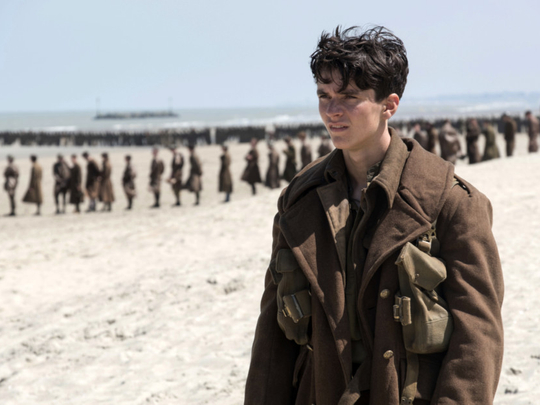
Like many before him, Christopher Nolan tries his hand at a highly-stylised Second World War film, taking on the historic Dunkirk evacuation — dubbed a “colossal military disaster” by British Prime Minister Winston Churchill — through a minimalist lens.
But unlike those before him, Nolan leaves the overt violence and battle sequences at bay, opting instead for sparse dialogue and a heart-stopping score from Hans Zimmer, a combination that creates disquiet in its audiences long after the credits roll.
Still, and despite all the praise and acclaim Dunkirk has and will receive for it being a visual masterpiece, the film isn’t untouchable.
It takes us back to 1940, when Dunkirk, a commune in northern France, bore witness to hundreds of thousands of allied Belgian, French and British soldiers, who were trapped and surrounded by German forces. Desperate to return home by any means necessary (England is practically close enough to see), British troops are reduced to their most primal human instinct: a predisposition to survive.
Told in a non-linear format through three converging timelines — the land, the air and the sea — the film can be disorienting right off the bat.
On the gloomy docks of Dunkirk, a claustrophobic atmosphere prevails as soldiers are stacked together like sardines. Every time they duck, the line of their helmets is the only thing that can be seen. Our leads Tommy (Fionn Whitehead) and Alex (Harry Styles) are in the midst of this congestion — wide-eyed, covered in grit and hungry to stay alive.
The sprawling, incongruously beautiful skies above are a picturesque juxtaposition, infiltrated by enemy planes dropping bombs at unpredictable intervals. A Royal Air Force pilot by the name of Farrier (Tom Hardy) tinkers with his faulty dashboard, but keeps cool as he gauges whether or not he has enough fuel to stay airborne.
Meanwhile, at sea, one of several British civilians sets out towards the perilous Dunkirk harbour on his modest boat, becoming part of an extraordinary effort to bring the troops home.
Somewhere in the centre of all this chaos, a masterclass in unconventional storytelling and cinematography is found. From the wide scenes of only cloud, to the shaky tracking shots of soldiers carrying their wounded, Nolan has no trouble disturbing the stereotypical notion of what it means to create a war movie.
Lead performances from newcomers Whitehead and Styles are compelling, with Styles commanding far more screen time (and speaking scenes) than audiences might expect. But both their characters, and those of the other soldiers, are kept deliberately generic. There are no gripping backstories here. Cillian Murphy, who gives one of the most poignant performances in the film, is credited only as Shivering Soldier.
Perhaps this is intended to make the story more relatable — a blank slate for the audience to project their selves onto. Who doesn’t, on some significant or insignificant level, know what fear, shame and self-preservation feel like? But it leaves something to be desired — a catharsis that never really comes. In that same vein, one might feel desensitised to an aestheticised historical film like this, at a time when just turning on the news reveals immediate and abundant suffering. In the end, it all depends on your threshold for Second World War movies, of which there are plenty.
That’s not to say Nolan hasn’t created something absorbing, highly charged and worth viewing here — maybe even worth several viewings. For better or worse, it’s a different take on the world’s deadliest conflict, reconstructing a tense moment in history that has seldom been explored. (Worth noting: there is a 1958 film of the same name out there.) All things considered, you can probably leave your tissues at home for this one, as Dunkirk proves itself to be less of an emotional journey, and more of an exhilarating one.
Dunkirk releases in the UAE on July 27.










